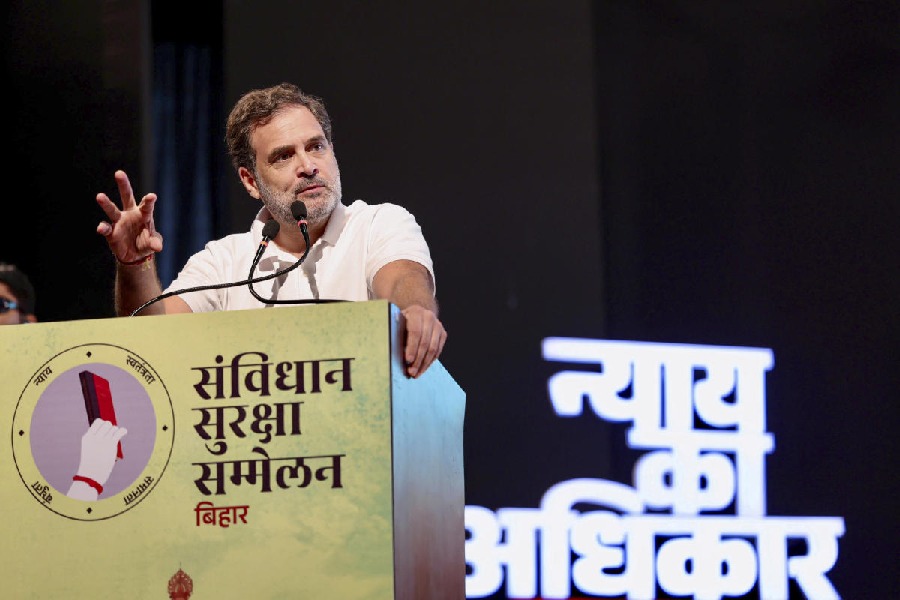|
|
The wooden, unimaginative dancing that passes as ‘Rabindrik dance’ belies the very depth and vision of the poet. If we cannot incorporate the fluidity of Tagorean dance, Rabindra nritya natya will not be able to break out of the rut that it finds itself at present. Therefore, it was both heartening and encouraging to see a group — Iman — from Jalpaiguri successfully break the stereotypical mould. Directed by Saibal Basu, Chandalika (picture), which was presented at Rabindra Sadan on June 3, was a blend of prose and dance drama. It was not the kind of dance drama that is normally performed routinely. Rather, it was a kind of dance theatre, which attempted to capture the delicate nuances of human relationships.
To explore the complex and fragile nature of the human mind, various elements of folk theatre, dance and rituals of North Bengal were beautifully infused. With a minimalist set, the dance theatre began with Naba basanter daner dali, which was performed at a furious pace. This immediately marked out the different nature of the production. After a long time, a convincing doiwala was seen and the choreography of the various sequences with the doiwala and the churiwala was quite fresh. The group dance performed along with the song, Mati toder dak dieche, was spontaneous. Each of the group numbers of the entire production was vivacious. The colourful costumes added to the allure.
Folk dance styles of North Bengal were used and performed brilliantly. The bashikaran ritual — with its use of black chamar of the vishahari style of Jalpaiguri — stood out for its authentic portrayal.
Moumita Sengupta’s performance was appropriate and captivating. Ritu Sengupta proved her mastery over the art form, but the consistency of her character was not maintained. The musical accompaniment of Chandalika was novel in many ways. Mukhobashi of the Rajbanshi community, hem (drum) of the Rava tribe, dotara of bhawaiya and the mridanga of the vishahari were used to enhance the depth and the drama. Mohan Singh lent his voice for Ananda. The costume was designed by Anuradha Acharya and Sravantika Banerjee.
To pay tribute to Kelucharan Mahapatra and Raghunath Dutta, Shinjan Nrityalaya presented an evening of Odissi at Sisir Mancha on June 14. The programme began with an inaugural rangapuja, which was followed by a solo presentation by Nivedita Daw, an upcoming Odissi dancer. A disciple of Aloka Kananga, Daw presented a pallavi based on the raga, Behag. This intricate performance was performed by the artist to near-perfection. Her neat postures pointed to proper training and practice.The next artist, Jyoti Shrivastava, presented another pallavi, but this was based on raga Kirwani. Her next selection was an ashtapadi that depicted her powers of expression. The final performer, Ileana Citaristi, presented a pure dance based on Bakulavaranam. Italian by birth, Citaristi successfully devised a vocabulary of her own in this piece created by her. She concluded her recital with Sharanam, an abhinaya that she has composed herself.











